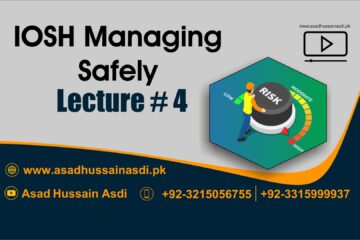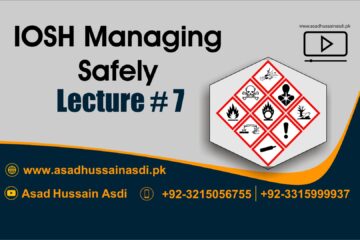ProQual Level 2 Certificate in Supporting Access to Legal Advice Course in Pakistan|| Registration Open
Registration Open= +92-3315999937, +92- 3215056755 (WhatsApp Only)
Introduction
The Level 2 Certificate in Supporting Access to Legal Advice is aimed at part-time staff and volunteers who support the provision of legal information and advice to clients.
Candidates will demonstrate knowledge and skills including communicating effectively with legal advice clients, supporting clients to make use of services and helping them to access signposting and referral opportunities.
Progression opportunities for candidates may be more specialist roles in providing legal advice or supervisory/management roles and higher level qualifications, such as ProQual Level 3 Award or Certificate in Providing Initial Legal Advice and information, or ProQual Level 4 Certificate or Diploma in Providing Specialist Legal Advice, or ProQual Level 3 Diploma in Management.
The awarding organisation for this qualification is ProQual Awarding Body and the regulatory body is the Office of Qualifications and Examinations Regulation (Ofqual). The specification for these qualifications has been approved by the Welsh Government for use by centres in Wales and by the Council for the Curriculum Examinations and Assessment (CCEA) for use by centres in Northern Ireland. This qualification has been accredited onto the Regulated Qualifications Framework (RQF).
Qualification Profile
| Qualification title | ProQual Level 2 Certificate in Supporting Access to Legal
Advice |
| Ofqual qualification number | 601/4395/2 |
| Level | Level 2 |
| Total qualification time | 130 hours |
| Guided learning hours | 90 |
|
Assessment |
Pass or fail
Assessed and verified by centre staff External quality assurance by ProQual verifiers |
| Qualification start date | 1/09/14 |
| Qualification end date |
Entry Requirements
There are no formal entry requirements for this qualification.
Centres should carry out an initial assessment of candidate skills and knowledge to identify any gaps and help plan the assessment.
Qualification Structure
Candidates must complete all of the Mandatory units, plus a minimum of 6 credits from the Optional Units.
| Mandatory Units – complete all units | |||
| Unit Reference
Number |
Unit Title | Unit
Level |
Credit
Value |
| R/502/7657 | Communicating with legal advice clients | 2 | 3 |
| D/503/0822 | Supporting clients to make use of the legal advice service | 2 | 3 |
| R/502/7660 | Enabling legal advice clients to access signposting and
referral opportunities |
2 | 3 |
| Optional Units – a minimum of 6 credits | |||
| Unit Reference
Number |
Unit Title | Unit
Level |
Credit
Value |
| M/502/8542 | Obtaining and providing legal information materials | 2 | 3 |
| R/502/8453 | Providing legal information and advice using the telephone | 2 | 3 |
| K/601/1216 | Recognise diversity when delivering customer service | 2 | 5 |
| L/601/0933 | Give customers a positive impression of yourself and your
organisation |
2 | 5 |
| T/601/3101 | Contributing to effective team working | 2 | 6 |
| L/506/0334 | Reflective practice in a legal advice context | 2 | 3 |
Centre Requirements
Centres must be approved to offer this qualification. If your centre is not approved please complete and submit form ProQual Additional Qualification Approval Application.
Staff
Staff delivering this qualification must be appropriately qualified and occupationally competent.
Assessors/Internal Quality Assurance
For each competence-based unit centres must be able to provide at least one assessor and one internal verifier who are suitably qualified for the specific occupational area. Assessors and internal verifiers for competence-based units or qualifications will normally need to hold appropriate assessor or verifier qualifications, such as:
- Award in Assessing Competence in the Work Environment
- Award in Assessing Vocationally Related Achievement
- Certificate in Assessing Vocational Achievement
- Award in the Internal Quality Assurance of Assessment Processes and Practices
- Certificate in Leading the Internal Quality Assurance of Assessment Processes and Practices
Support for Candidates
Materials produced by centres to support candidates should:
- enable them to track their achievements as they progress through the learning outcomes and assessment criteria;
- provide information on where ProQual’s policies and procedures can be viewed;
- provide a means of enabling Internal and External Quality Assurance staff to authenticate evidence
Assessment
Candidates must demonstrate the level of knowledge described in the unit. Assessment is the process of measuring a candidate’s knowledge and understanding against the standards set in the qualification.
Each candidate is required to produce evidence which demonstrates their achievement of all of the learning outcomes and assessment criteria for each unit.
Evidence can include: – assignments/projects/reports
- worksheets
- portfolio of evidence
- record of oral and/or written questioning
- candidate test papers
Learning outcomes set out what a candidate is expected to know, understand or be able to do.
Assessment criteria specify the standard a candidate must meet to show the learning outcome has been achieved.
Learning outcomes and assessment criteria for this qualification can be found from page 8 onwards.
Internal Quality Assurance
An internal quality assurance verifier confirms that assessment decisions made in centres are made by competent and qualified assessors, that they are the result of sound and fair assessment practice and that they are recorded accurately and appropriately.
Adjustments to Assessment
Adjustments to standard assessment arrangements are made on the individual needs of candidates. ProQual’s Reasonable Adjustments Policy and Special Consideration Policy sets out the steps to follow when implementing reasonable adjustments and special considerations and the service that ProQual provides for some of these arrangements.
Centres should contact ProQual for further information or queries about the contents of the policy.
Results Enquiries and Appeals
All enquiries relating to assessment or other decisions should be dealt with by centres, with
reference to ProQual’s Enquiries and Appeals Procedures.
Certification
Candidates who achieve the required credits for qualifications will be awarded:
- A certificate listing the unit achieved with its related credit value, and
- A certificate giving the full qualification title –
ProQual Level 2 Certificate in Supporting Access to Legal Advice
Claiming certificates
Centres may claim certificates for candidates who have been registered with ProQual and who have successfully achieved the required number of credits for a qualification. All certificates will be issued to the centre for successful candidates.
Replacement certificates
If a replacement certificate is required a request must be made to ProQual in writing. Replacement certificates are labelled as such and are only provided when the claim has been authenticated. Refer to the Fee Schedule for details of charges for replacement certificates.
Learning Outcomes and Assessment Criteria
- Know the importance of establishing communication with new and existing legal advice clients
- Be able to communicate with legal advice clients
- Know the importance of following client confidentiality procedures
- Know how to minimise communication difficulties with legal advice clients
- Be able to take action in situations that require immediate action
- Describe why it is important to establish communication with legal advice clients
- Identify the services that can be made available to legal advice clients
- Describe what constitutes a safe environment for legal advice clients and advisers
- Explain the importance of allocating appropriate time and attention to legal advice clients
- Describe how to create an environment that will help legal advice clients to express their needs
- Demonstrate how to use effective communication skills to encourage legal advice clients to express their needs
- Describe legal and organisational procedures for client confidentiality
- Describe why it is important to maintain client confidentiality
- Identify the legal exceptions to maintaining client confidentiality
- Identify when communication difficulties with clients can occur
- Identify the kinds of barriers to good communication with clients that can occur
- Describe ways of minimising barriers to good communication with clients
- Recognise when immediate action may be required by legal advice clients
- Describe why it is important to take immediate action on behalf of legal advice clients
- Identify the actions that can be taken when an immediate response is required
Assessment
This unit requires the workplace assessment of occupational competence wherever practicable. For the knowledge and understanding component of the unit, assessment from a learning and development environment is allowed.
There must be valid, authentic and sufficient for all the assessment criteria. However, one piece of evidence may be used to meet the requirements of more than one learning outcome or assessment criterion.
- Know the importance of supporting clients to make use of the legal advice service
- Be able to support clients on their use of the legal advice service
- Be able to provide information to
meet the client’s needs
- Describe the kinds of legal advice services available to the client
- Describe the factors that can impact on whether a client can/will use the legal advice service
- Describe the steps to take when supporting clients to make use of the legal advice service
- Identify other services that may be available to clients
- Identify the organisational legal and ethical requirements that impact on actions to support clients to make use of the legal advice service
- Demonstrate how to establish the client’s needs and
expectations of the service
- Explain how the legal advice service can meet the needs of the client
- Demonstrate how to agree with the client the procedures for using the service
- Use organisational procedures to record details of the client interaction
- Describe the actions involved in providing information to meet the needs of legal advice clients
- Demonstrate how to confirm with the client their information needs
- Identify the sources of information to meet the client’s
needs
- Provide the information to meet the client’s needs
- Demonstrate how to confirm with the client that their information needs have been met
- Describe any other actions that may be required to meet their needs
- Use organisational procedures to record details of the client interaction
Assessment
This unit requires the workplace assessment of occupational competence wherever practicable. For the knowledge and understanding component of the unit, assessment from a learning and development environment is allowed. The practical aspects of this unit must be assessed by direct observation.
There must be valid, authentic and sufficient for all the assessment criteria. However, one piece of evidence may be used to meet the requirements of more than one learning outcome or assessment criterion.
- Know the referral opportunities available to legal advice clients
- Know the organisational and legal requirements relating to the referral of legal advice clients to other services
- Be able to help legal advice clients to take up referral opportunities
- Identify the range of services that are available to legal advice clients
- Describe the services that can be provided by own organisation
- Describe the services that can be provided by other organisations
- Identify the reasons why it may be necessary to refer legal advice clients to other services
- Describe the organisational procedures for referring legal advice clients to other services
- Identify the legal and ethical requirements that must be followed during referral processes
- Explain the reasons for following organisational, legal and ethical requirements during the referral process
- Obtain information from clients on their requirements
- Review the services available to meet the
client’s needs
- Provide the client with accurate information about the options available to meet their requirements
- Check that other service providers have the capacity to provide the appropriate service to the client
- Agree the referral process with the client
- Refer the legal advice client to other service using agreed organisational procedures
- Use organisational procedures to record details of the referral process
| Learning Outcome – The learner will: | Assessment Criterion – The learner can: | ||
| 1 | Know why legal information materials may be required | 1.1 | Identify the potential users of the legal information materials |
| 1.2 | Describe how to obtain information on the information needs of users | ||
| 1.3 | Describe how to check the currency and accuracy of the information materials | ||
| 1.4 | Describe how information and communication technologies can impact on the presentation and supply of legal information materials | ||
| 1.5 | Identify how the information materials will be used during their lifecycle | ||
| 1.6 | Identify the sources of legal information materials | ||
| 1.7 | Explain the reasons for following organisational, legal and ethical requirements when obtaining and providing legal advice materials | ||
| 2 | Be able to provide legal information materials | 2.1 | Describe the kinds of information materials that can be provided |
| 2.2 | Identify the different formats that can be used for the information materials | ||
| 2.3 | Confirm the legal information needs with users | ||
| 2.4 | Obtain supplies of legal information materials to meet the needs of users | ||
| 2.5 | Follow all organisational, legal and ethical requirements for obtaining and providing legal advice materials | ||
| 2.6 | Help users to obtain the information they need | ||
| 2.7 | Use organisational procedures to record the use and supply of legal information materials | ||
| 3 | Be able to assess the effectiveness of the legal information materials provided | 3.1 | Review the use and take-up of the legal information materials provided |
| 3.2 | Confirm with users that the materials provided meet their needs | ||
| 3.3 | Identify how the supply of legal information materials could be improved | ||
| 3.4 | Identify who should be consulted on the planned improvements in the provision of legal information materials provided | ||
| 3.5 | Use organisational procedures to record the use and effectiveness of legal information materials | ||
Assessment
This unit requires the workplace assessment of occupational competence wherever practicable. For the knowledge and understanding component of the unit, assessment from a learning and development environment is allowed.
There must be valid, authentic and sufficient for all the assessment criteria. However, one piece of evidence may be used to meet the requirements of more than one learning outcome or assessment criterion.
- Know the processes and procedures for providing legal
- Describe the reasons for providing legal information and advice using the telephone
information and advice using the 1.2 Identify the different kinds of telecommunication
- Be able to respond to client queries on the telephone
technology available for the provision of legal information and advice
- Explain the functions available on your telephone system
- Describe the problems that could occur in maintaining the call and how to overcome them
- Describe the relevant national, local, legal, professional and organisational requirements relating to providing information and advice to clients on the telephone
- Describe ways of making clients feel welcome on the telephone and sustaining the call
- Describe why it is important for the client to recognise the value of their anonymity during the call
- Describe how to recognise signs of increased client stress during the call and why this is important
- Describe how to recognise situations when it might be disadvantageous or dangerous to the client to end the call
- Explain the reasons for following the relevant national, local, legal, professional and organisational requirements relating to providing information and advice to clients on the telephone
- Respond to client calls in a way that encourages them to remain on the line
- Review the client’s needs and expectations from the call
- Provide information on the services the organisation can provide
- Identify any potential risks or dangers facing the client
- Provide information to the client that will minimise any risks
- Respond to the client’s immediate needs throughout the
call
- Identify signs of increased client stress during the call
- Follow the relevant national, local, legal, professional and organisational requirements relating to providing information and advice to clients on the telephone
- Be able to end the call 1 Describe why it is important to give clear information to
the client on why/when the call will be ended
| Learning Outcome – The learner will: | Assessment Criterion – The learner can: |
| 3.2 | Provide the client with information on any further actions that could be taken by the client or the organisation |
| 3.3 | Identify when it might be disadvantageous or dangerous to the client to end the call |
| 3.4 | Follow the relevant national, local, legal, professional and organisational requirements relating to providing information and advice to clients on the telephone |
Assessment
This unit requires the workplace assessment of occupational competence wherever practicable. For the knowledge and understanding component of the unit, assessment from a learning and development environment is allowed.
There must be valid, authentic and sufficient for all the assessment criteria. However, one piece of evidence may be used to meet the requirements of more than one learning outcome or assessment criterion.
Respect customers as individuals 1.1 Observe verbal and non-verbal clues that provide
and promote equality in customer servi
- Adapt customer service to recognise the different needs and expectations of diverse groups of customers
- Understand how to recognise diversity when delivering customer service
information about their customer’s expectations and needs
- Identify and avoid features of stereotypes that might be applied to their customer that could carry the risk of causing offence
- Identify aspects of their customer’s appearance or communication which risk leading them to treat the customer differently
- Consider aspects of their customer’s appearance or communication in the light of their own beliefs about various groups of people that include their customer
- Question their customer to ensure that the impressions they are forming about their expectations and wishes are based on sound evidence
- Adjust their interpretation of the customer’s expectations and wishes as a result of further evidence they have collected by talking to their customer
- Follow organisational procedures and guidelines that seek to make customer service inclusive for diverse groups of customers
- Show respect for their customer’s individual beliefs, expectations and needs that may result from membership of a particular group
- Vary their approach to their customer to take account of beliefs, expectations and needs that result from membership of a particular group
- Work with colleagues to identify consistent approaches that team members should adopt when dealing with a particular group
- Explain the importance of recognising diversity in relation to age, disability, national origin, religion, sexual orientation, values, ethnic culture, education, lifestyle, beliefs, physical appearance, social class and economic status
- Explain reasons why consideration of diversity and inclusion issues affect customer service
- Describe organisational guidelines to make customer service inclusive for diverse groups of customers
- Explain how to observe and interpret non-verbal clues
- Describe how to listen actively for clues about their
customer’s expectations and needs
| Learning Outcome – The learner will: | Assessment Criterion – The learner can: |
| 3.6 | Identify techniques for obtaining additional information from customers through tactful and respectful questions |
| 3.7 | Describe behaviour that might cause offence to specific groups of people to whom they regularly provide customer service |
| 3.8 | Explain how to impress specific groups of people to whom they regularly provide customer service |
Assessment
This unit requires the workplace assessment of occupational competence wherever practicable. For the knowledge and understanding component of the unit, assessment from a learning and development environment is allowed.
There must be valid, authentic and sufficient for all the assessment criteria. However, one piece of evidence may be used to meet the requirements of more than one learning outcome or assessment criterion.
| Learning Outcome – The learner will: | Assessment Criterion – The learner can: | ||
| 1 | Establish rapport with customers | 1.1 | Meet their organisation’s standards of appearance
and behaviour |
| 1.2 | Greet their customer respectfully and in a friendly manner | ||
| 1.3 | Communicate with their customer in a way that makes them feel valued and respected | ||
| 1.4 | Identify and confirm their customer’s expectations | ||
| 1.5 | Treat their customer courteously and helpfully at all times | ||
| 1.6 | Keep their customer informed and reassured | ||
| 1.7 | Adapt their behaviour to respond to different customer behaviour | ||
| 2 | Respond appropriately to customers | 2.1 | Respond promptly to a customer seeking help |
| 2.2 | Choose the most appropriate way to communicate with their customer | ||
| 2.3 | Check with their customer that they have fully understood their expectations | ||
| 2.4 | Respond promptly and positively to their
customer’s questions and comments |
||
| 2.5 | Allow their customer time to consider their response and give further explanation when appropriate | ||
| 3 | Communicate information to customers | 3.1 | Quickly find information that will help their customer |
| 3.2 | Give their customer information they need about the services or products offered by their organisation | ||
| 3.3 | Recognise information that their customer might find complicated and check whether they fully understand | ||
| 3.4 | Explain clearly to their customers any reasons why their expectations cannot be met | ||
| 4 | Understand how to give customers a positive impression of themselves and the organisation | 4.1 | Describe their organisation’s standards for appearance and behaviour |
| 4.2 | Explain their organisation’s guidelines for how to recognise what their customer wants and respond appropriately | ||
| 4.3 | Identify their organisation’s rules and procedures
regarding the methods of communication they use |
| Learning Outcome – The learner will: | Assessment Criterion – The learner can: |
| 4.4 | Explain how to recognise when a customer is angry or confused |
| 4.5 | Identify their organisation’s standards for timeliness in responding to customer questions and requests for information |
Assessment
This unit requires the workplace assessment of occupational competence wherever practicable. For the knowledge and understanding component of the unit, assessment from a learning and development environment is allowed.
There must be valid, authentic and sufficient for all the assessment criteria. However, one piece of evidence may be used to meet the requirements of more than one learning outcome or assessment criterion.
- Contribute to effective team working
- Contribute to effective team working (continued)
- Present themselves in the workplace on time and in a way that does not cause concern to other team members
- Develop and maintain team working relationships with two of the following:
- immediate supervision/line management
- colleagues in same work group
- colleagues in other work groups
- those for whom they have responsibility
- personnel in other departments
- external contacts
- Work in accordance with the roles and responsibilities identified for their individual and team activities
- Make sure that any actions that they take are within the limits of their own responsibility and authority
- Ask for information, advice and/or help politely, without causing disruption to their own or other team members work
- Offer help to others promptly and willingly in order to ensure team objectives are met
- Contribute to team discussion/briefing sessions in a positive manner that shows respect for the views and rights of others
- Deal with problems in team relationships in ways which minimise offence and maintain mutual respect
- Discuss problems which may affect team relationships with the appropriate person to include two of the following:
- other team members
- team leader
- immediate line manager
- personnel or welfare officer
- Refer requests for information and/or assistance that are outside their authority/responsibility to the appropriate people
- Work together to resolve disagreements and difficulties in team relationships
- Communicate orally with team members by two of the following methods:
- team briefings
- question and answer sessions
- group discussions
- problem resolution processes
- Communicate in writing or electronically to include using one of the following methods:
- adding ideas and actions to team boards
- maintaining up to date key performance/production indicators
| Learning Outcome – The learner will: | Assessment Criterion – The learner can: | ||
| • processing information
• communicating via e-mail/internal network services |
|||
| 2.7 | Communicate in a manner which promotes understanding, goodwill and trust | ||
| 3 | 2a. Know how to contribute to effective team working | 3.1 | Describe the statutory regulations that can affect working relationship i.e. Disability, Equal Opportunities, Discrimination, Harassment |
| 3.2 | Explain why it is important to create and maintain good team working relationships | ||
| 3.3 | Explain what are the sort of things that might affect good team working relationships | ||
| 3.4 | Explain why it is important to present themselves in the workplace on time and ready for work | ||
| 3.5 | Explain the methods that can be used to establish and maintain good team working relationships | ||
| 3.6 | Explain the methods of handling and resolving difficulties in team working relationships | ||
| 3.7 | Explain how to use data and team information to help resolve concerns and disagreements | ||
| 3.8 | Explain why it is important to resolve difficulties or misunderstandings quickly and not let them develop into more serious problems | ||
| 3.9 | Explain why it is important to share their knowledge and information and their performance measures with other people in their team and with other groups | ||
| 3.10 | Explain how to use the data and information available to them to communicate their performances effectively to others | ||
| 3.11 | Explain what types of information and data are available in their area such as key performance measures, production targets, quality, scrap ratios, problem resolution processes, action planning brainstorming and continuous improvement processes | ||
| 4 | 2b. Know how to contribute to effective team working (continued) | 4.1 | Explain what mixture of skills and experience is available in their team to support them or the manufacturing process when problems occur (such as a team skills matrix) |
| 4.2 | Explain why they need to keep other team members involved in or informed of any plans or activities they may be doing | ||
| 4.3 | Explain what type of support or assistance might they need from other team members | ||
| 4.4 | Explain why it is important to request help from other team members in a polite and timely manner and to offer assistance to them when help is needed | ||
| 4.5 | Explain why it is important to show respect for the views, rights and property of other team members | ||
| Learning Outcome – The learner will: | Assessment Criterion – The learner can: |
| 4.6 | Explain how asking for help or assistance at inappropriate times can lead to disruption and problems within the team |
| 4.7 | Describe the methods used in their area for effective communication (such as team briefings covering team performance, quality, cost and delivery issues, general information, personnel issues and action plans) |
| 4.8 | Explain who to refer to with requests that are not within the limits of their responsibility |
| 4.9 | Explain who to refer to if they have problems with team relationships that they cannot resolve |
| 4.10 | Explain what their responsibilities are with regard to the reporting lines and procedures in their working area |
| 4.11 | Explain who are the appropriate people and what are their responsibilities |
Assessment
This unit requires the workplace assessment of occupational competence wherever practicable. For the knowledge and understanding component of the unit, assessment from a learning and development environment is allowed.
There must be valid, authentic and sufficient for all the assessment criteria. However, one piece of evidence may be used to meet the requirements of more than one learning outcome or assessment criterion.
- Understand the principles of reflective practice in a legal advice cont
- Be able to reflect on own practice in a legal advice context
- Describe what is meant by reflective practice
- Outline the types of evidence that can be used to inform reflective practice
- Identify the types of activity that can be used to improve own practice
- Describe factors that can impact on reflective practice
- Apply reflective practice in a legal advice context
- Implement changes to improve own practice based on reflective practice
Assessment
This unit requires the workplace assessment of occupational competence wherever practicable. For the knowledge and understanding component of the unit, assessment from a learning and development environment is allowed.
There must be valid, authentic and sufficient for all the assessment criteria. However, one piece of evidence may be used to meet the requirements of more than one learning outcome or assessment criterion.






















